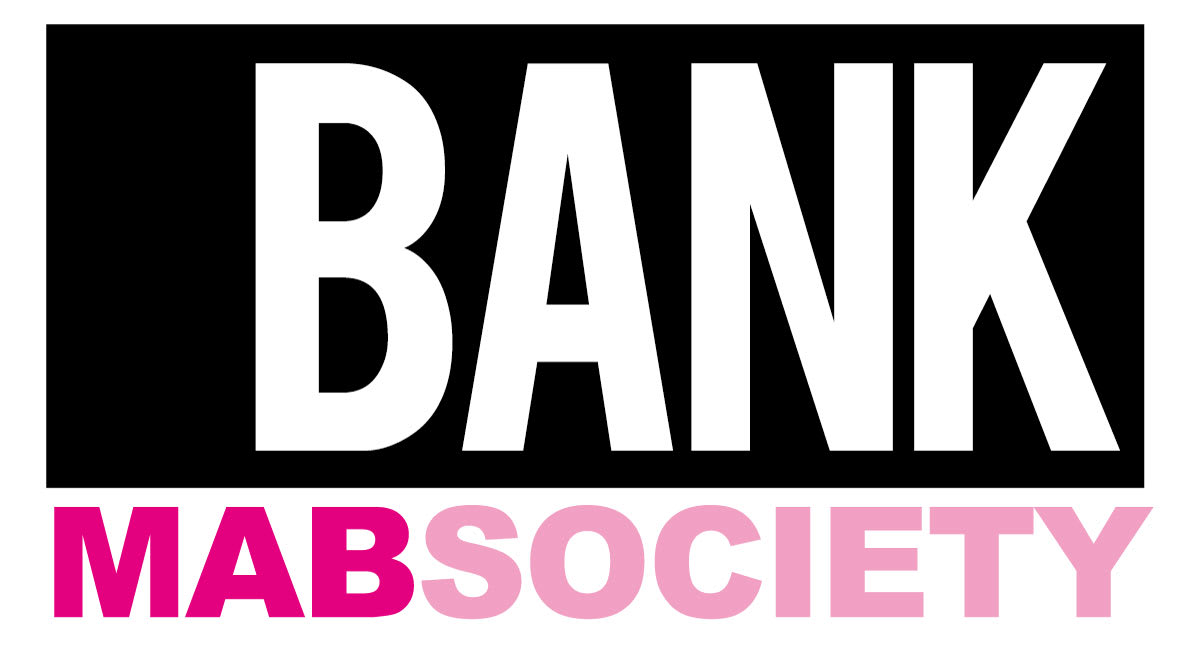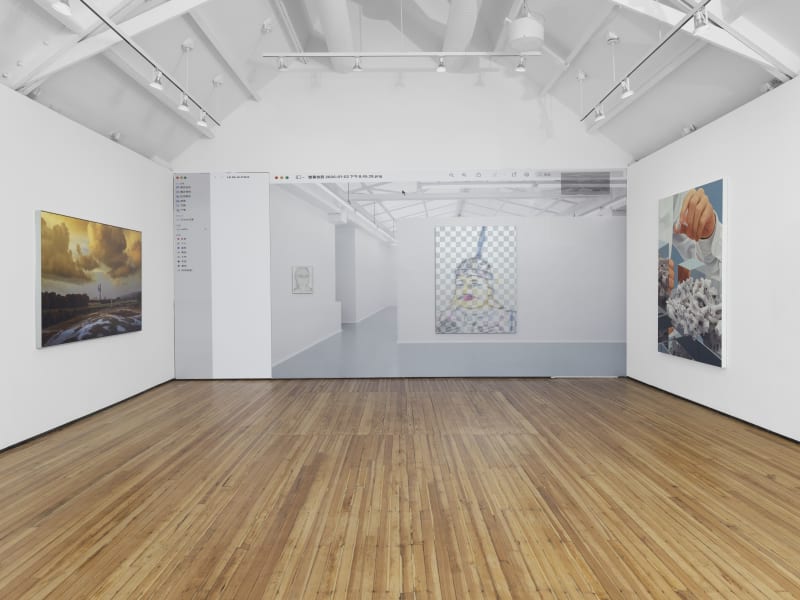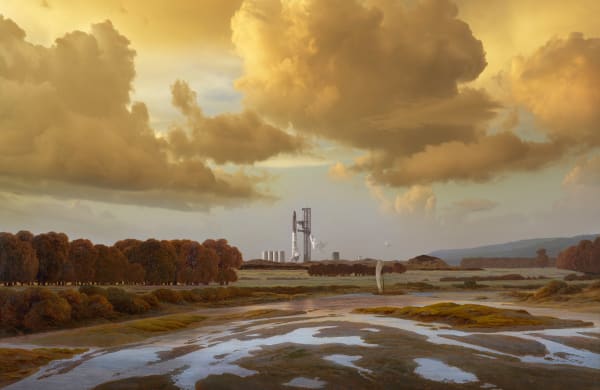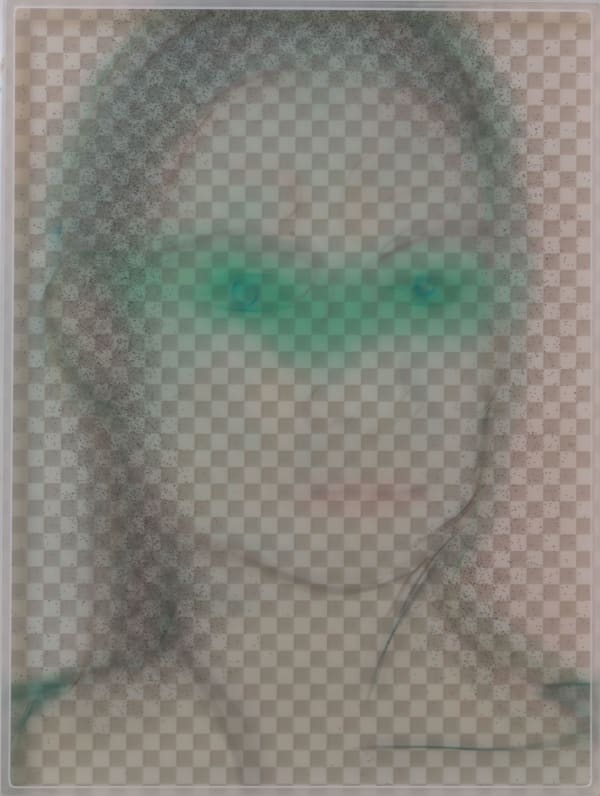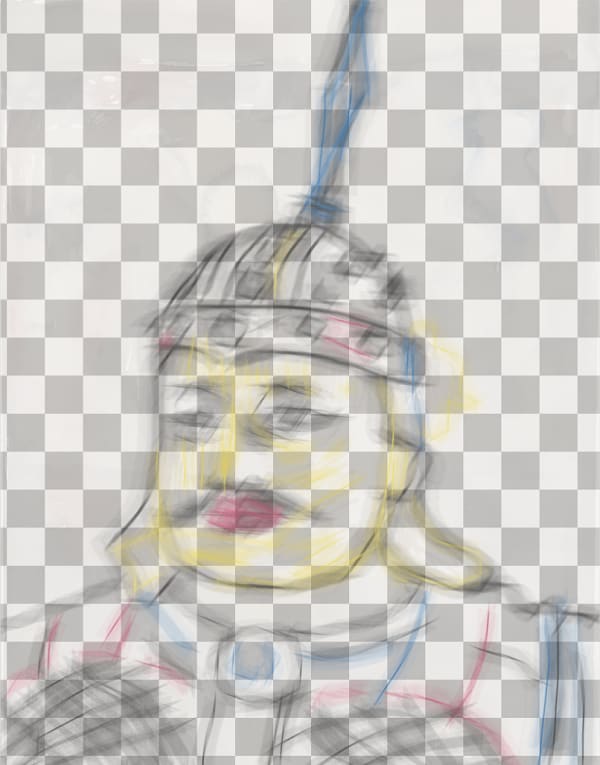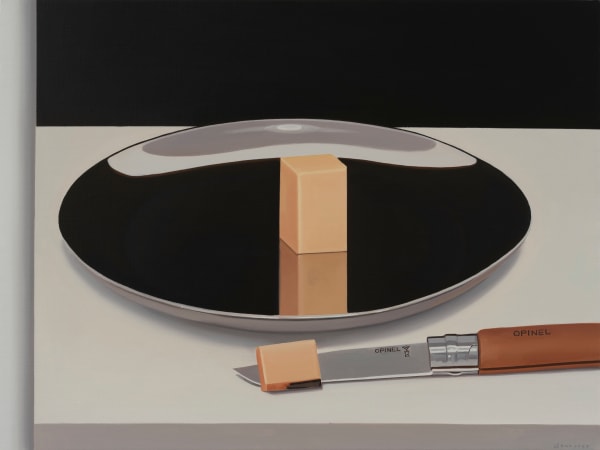Booth 127: A Fair Show
New York, NY –– Opening May 2, BANK NYC will debut Booth 127: A Fair Show. In celebration of New York’s Art Week, which sees the opening of ten international art fairs, BANK mounts its own art fair presentation on the gallery’s upper level. Playing with the seemingly random, kaleidoscopic nature of the art fair booth, BANK's group show is set against the backdrop of technological expansion, geopolitical instability, and ecological rupture, highlighting the absurdity of our present moment.Featuring works by Ching Ho Cheng, Lin Ke, Michael Najjar, Liang Hao, Wenjue, Bony Ramirez, and Sun Yitian, the exhibition considers various thresholds: sites of transformation where form and identity break down, rebuild, or remain in flux. The artists on view investigate what remains when structures of the body, identity, information, or myth begin to dissolve.
Ching Ho Cheng’s (1946-1989) delicate and metaphysical gouache paintings radiate with a quiet spiritual intensity. In Tattooed Man (1970), a glowing, sage-like figure emerges from a watery stillness, evoking Chuang Tzu’s dream of the butterfly, merging man and nature. For Cheng, the tattooed man becomes a motif for transformation, echoing Cheng’s own metaphysical investigations into impermanence and rebirth, and his frequent allusions to Taoist teachings and the psych-pop aesthetics of the ‘70s and ‘80s. Cheng, who passed away in 1989 due to AIDS-related complications, has remained a representative voice among Asian-American artists.
Bony Ramirez’s (b. 1996) colorful figures traverse the boundaries between Caribbean culture, colonial history, and Surrealist invention. Working with layered paper collage and mixed media, Ramirez bends the human anatomy to create fantastical, fragmented bodies that both resist and reimagine the exoticized gaze. Taking inspiration from Catholic imagery, Italian mannerism, Cubism, Renaissance portraiture, and the streets of the Dominican Republic, Ramirez’s compositions and imaginary figures consider possibilities for reclaiming identity through mythological transformation.
Lin Ke’s (b. 1984) Sky Paintings operate somewhere between apparition and interface. Hovering digital figures, Photoshop transparency checkerboards, and image-processing glitches construct what the artist calls “ghostivity”—a term that questions the pervasive presence of big data and the contemporary blur between physical and digital selves. These works are neither fully present nor absent; instead, they flicker. The figures seem to surface and dissolve in real time, collapsing boundaries between the algorithmic and the somatic. These investigations continue in Lin’s concurrent solo show at BANK’s Shanghai space.
In Michael Najjar’s (b. 1966) digitally collaged photograph CDF-X (2024), science fiction collides with Romantic tradition. Inspired by the paintings of Caspar David Friedrich, Najjar captures the SpaceX Starship seconds before its inaugural launch, positioning it at the threshold of Earth and the cosmos. Najjar fuses sci-fi imagery with the language of heroic landscape painting to examine the aesthetics of ambition, specifically, how techno-capital desires have shifted our visions of the sublime. At the precipice of Earth and sky, flight and destruction, the image captures the dynamics of our current technological moment: both exciting and ominous.
Sun Yitian (b. 1991) blurs the line between mass production and emotional memory in her glossy, hyperreal depictions of inflatable animals and plastic toys. Rendered with stark precision, uncanny stillness, and under a harsh, exposing light, these childhood objects become strange totems of longing and alienation. In Ken (2019), Sun looks at Barbie’s iconic boyfriend as a hollow object of desire; enchanting for his conventional masculinity and glossy, airbrushed finish. Sun’s paintings reference both global consumer culture and private nostalgia, hinting at deeper psychological and social layers beneath their candy-colored surfaces.
In his atmospheric canvases, Liang Hao (b. 1988) renders hands, tools, and specimens in hyper-sensuous detail, meditating on the human hand as both an expressive and technical extension of the mind. These hands hover, suspended in a moment of inspection and introspection; the cold forensic lighting heightens the mystery of their intentions. In a smaller, contemplative work, a plate of cheese and a resting knife rendered at life-size scale become objects of memory. Here, the human is absent, yet implied in a simple gesture and moment of pause.
As the youngest artist in BANK’s roster, Wenjue (b. 2001) disrupts painterly tradition through hallucinatory accumulations of oil paint. His paintings push the medium to its sculptural edge, built up in thick bas-reliefs that bubble off the canvas. Conceived as "artificial grottos", the works explore the details in the crevices and the deeper human obsession with that which is warped and deviant. Wenjue’s work is simultaneously a generational archive and a fever dream: a post-2000s collage of desire, card games, heroes, and digital mythologies. This exhibition of works coincides with Wenjue’s solo presentation at Esther II in May 2025
-
 Wenjue 文爵, (The Alibi Of God) Stigmata 神的不在場證明(聖痕), 2025
Wenjue 文爵, (The Alibi Of God) Stigmata 神的不在場證明(聖痕), 2025 -
 Wenjue 文爵, (The Alibi Of God) SOULMATE 神的不在場證明(靈魂伴侶), 2025
Wenjue 文爵, (The Alibi Of God) SOULMATE 神的不在場證明(靈魂伴侶), 2025 -
 Michael Najjar 迈克尔·耐贾尔, CDF-X, 2024
Michael Najjar 迈克尔·耐贾尔, CDF-X, 2024 -
 Lin Ke 林科, Green Eyes 02 绿色眼睛 02 , 2023
Lin Ke 林科, Green Eyes 02 绿色眼睛 02 , 2023
